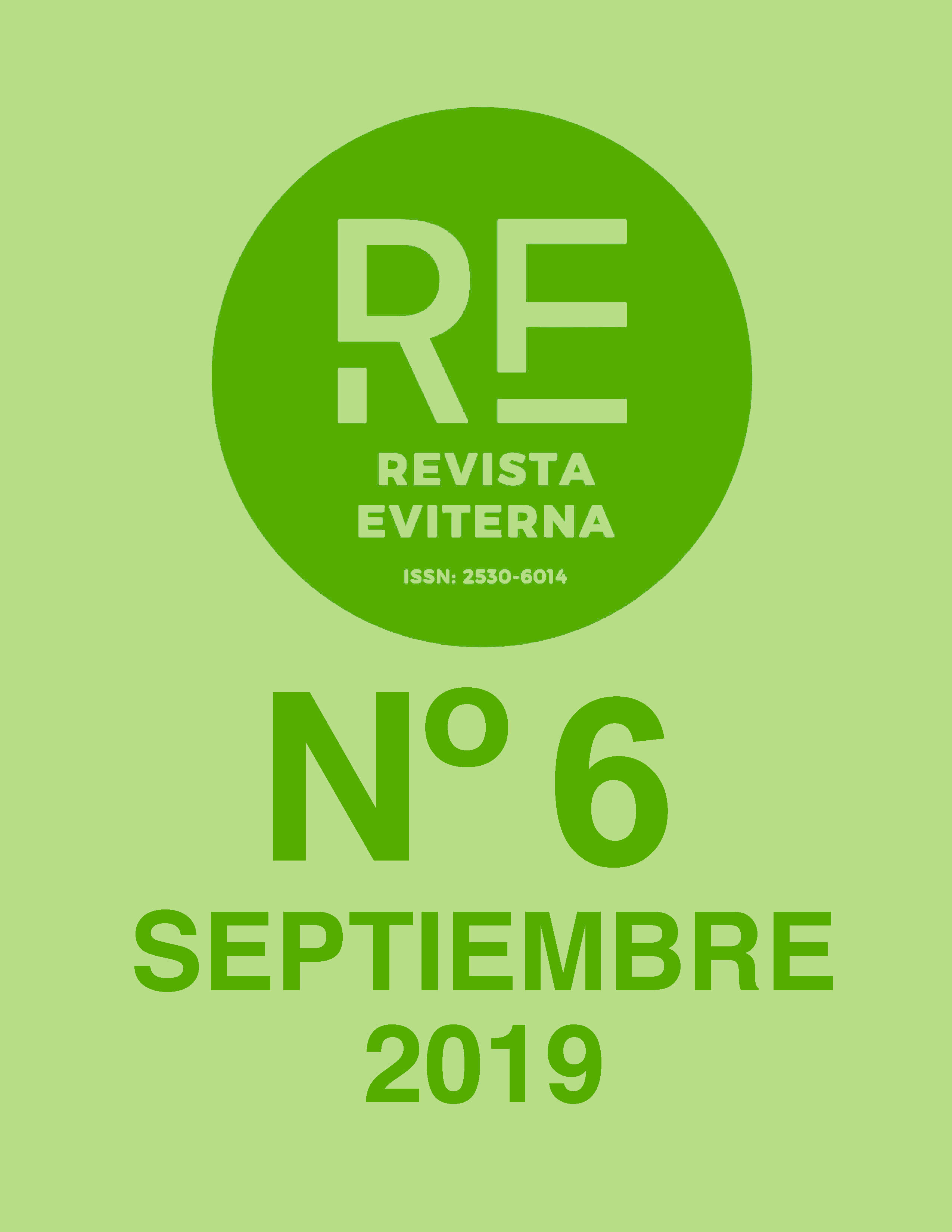Urban geography and quinqui cinema. Subjectification around the city in Navajeros, of Eloy de la Iglesia
DOI:
https://doi.org/10.24310/Eviternare.v0i6.8052Keywords:
urbanism; quinqui cinema; postfranchism; postmodernityAbstract
The main point of this essay revolves around two axes: the representation of the quinqui subjectivities in the escopic regime of the Navajeros film, by Eloy de la Iglesia, and the approach to the urbanization policies of postfranchism as the enfine of demographic changes in cities and as a conditioning practice of human behavior in today’s society. For this, a film like Navajeros is so interesting both for the staging of violence in the urban enviroment of Madrid and for the relationship it establishes between different architectures and geographical spaces of the city.
Downloads
Metrics
References
CERCAS, Javier (2012). Barcelona: Mondadori.
CUESTA, Amanda (2015): “Los Quinquis del barrio”, en VV.AA. (eds.), Granada, Comares, pp. 3-26.
DE LA IGLESIA, Eloy (1980). España: Fígaro Films.
HILL, Walter (1979). Estados Unidos: Paramount Pictures.
JACOBS, Jane (1961). Nueva York: RandomHouse. Traducción al español de Ángel Abad (2011). Muerte y vida de las grandes ciudades. Madrid: Capitán Swing Libros [cit. por 3ª ed., 2013].
JAMESON, Frederic (2008). Oxford: New Left Review Ltd. Traducción al español de Martín Glikson (2012). Posmodernismo: La lógica del capitalismo avanzado. Buenos Aires: La Marca Editora.
KUBRICK, Stanley (1971).: Reino Unido: Warner Bros.
LABRADOR, Germán (2015), “La habitación del Quinqui. Subalternidad, biopolítica y memorias contrahegemónicas, a propósito de las culturas juveniles de la transición española”, en VV.AA. (eds.). Granada, Comares, pp. 27-66.
LYNCH, Kevin (1960). Massachusetts: The MIT Press. Traducción al español de Enrique Luis Revol (1984). La imagen de la ciudad.Barcelona: Gustavo Gili [cit. por 3ª ed, 2015].
MARTÍNEZ, Guillem (coord.) (2012). Barcelona: Debolsillo.
MATOS-MARTÍN, Eduardo (2015), “Entre la exclusión y la inclusión: cultura y los años 80 en de Eloy de la Iglesia”, en VV.AA. (eds.). Granada, Comares, pp. 91-108.
SUDJIC, Deyan (2016). Londres: PenguinBooks Ltd. Traducción al español de Ana Herrera (2017). El lenguaje de las ciudade. Barcelona: Ariel.
VV. AA (eds.) (2015). Granada: Comares.
Downloads
Published
How to Cite
Issue
Section
License
All the contents published in Revista Eviterna are subject to the Creative Commons Reconocimento-NoComercia-Compartirigual 4.0 license, the full text of which can be found at <http://creativecommons.org/licenses/by-nc-sa/4.0>
They may be copied, used, disseminated, transmitted and publicly exposed, provided that:
The authorship and original source of your publication (Journal, editorial and URL of the work) are cited.
They are not used for commercial purposes.
The existence and specifications of this use license are mentioned.

Copyright is of two kinds: moral rights and patrimonial rights. Moral rights are perpetual, inalienable, inalienable, inalienable, inalienable and imprescriptible prerogatives.
In accordance with copyright legislation, Revista Eviterna recognizes and respects the moral rights of the authors, as well as the ownership of the economic right, which will be transferred to the University of Malaga for dissemination in open access.
The economic rights refer to the benefits obtained by the use or disclosure of the works. Revista Eviterna is published in open access and is exclusively authorized to carry out or authorize by any means the use, distribution, disclosure, reproduction, adaptation, translation or transformation of the work.
It is the responsibility of the authors to obtain the necessary permissions of the images that are subject to copyright.






12.png)
